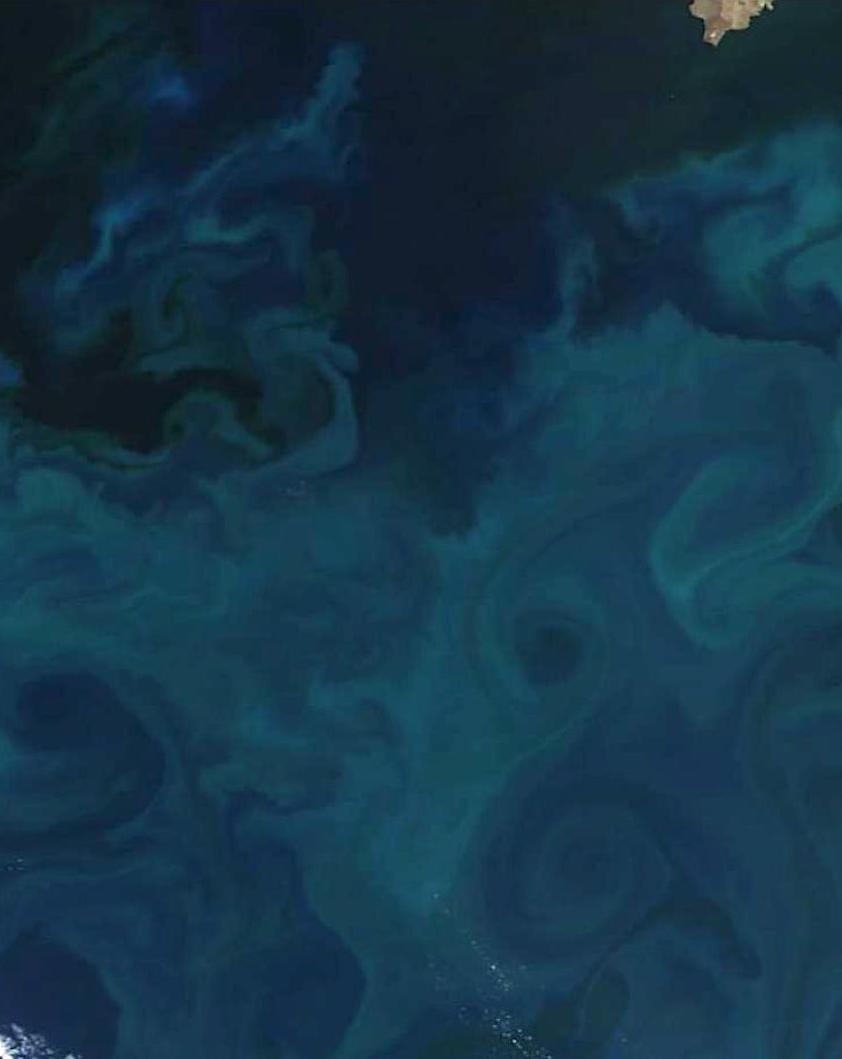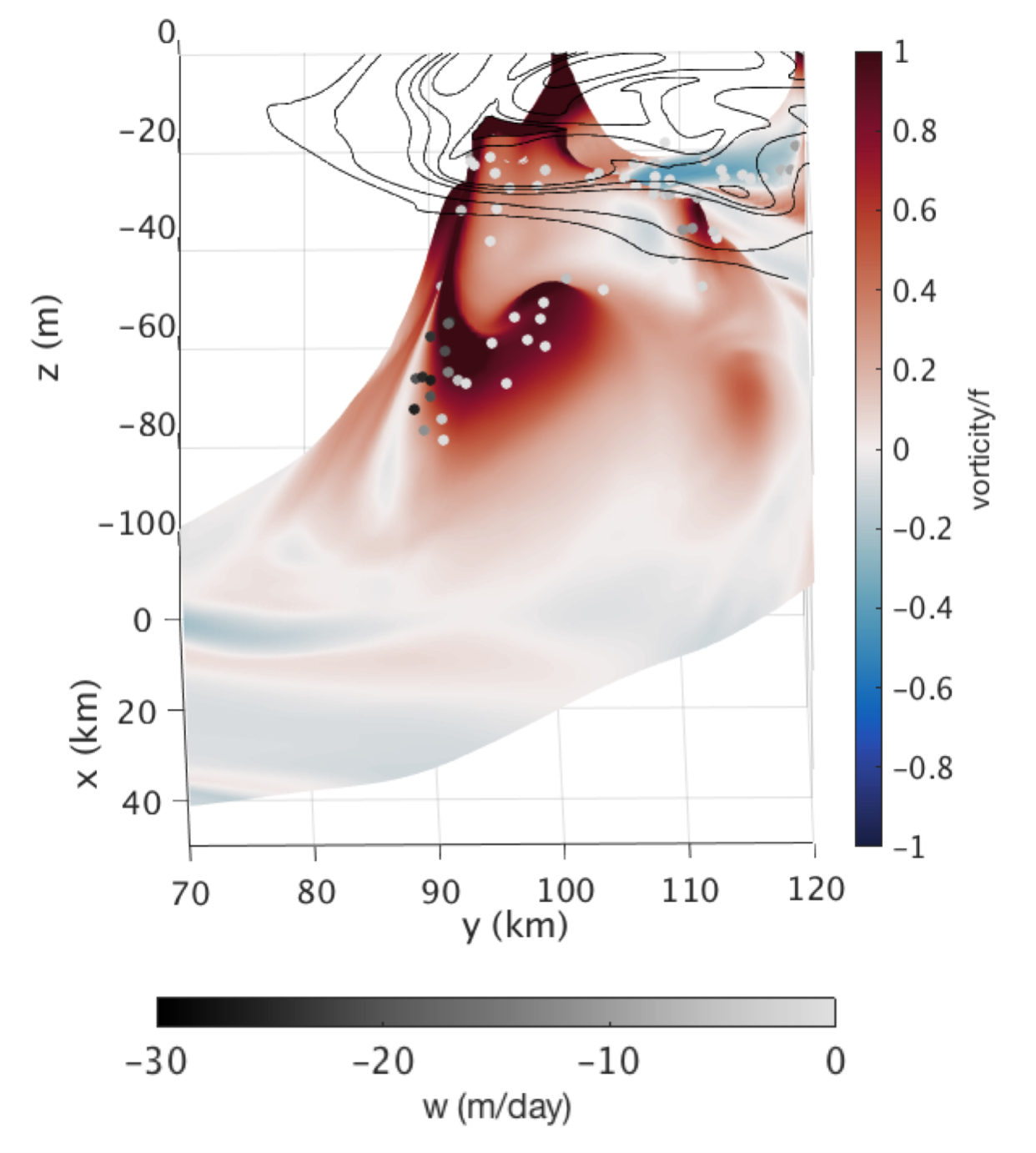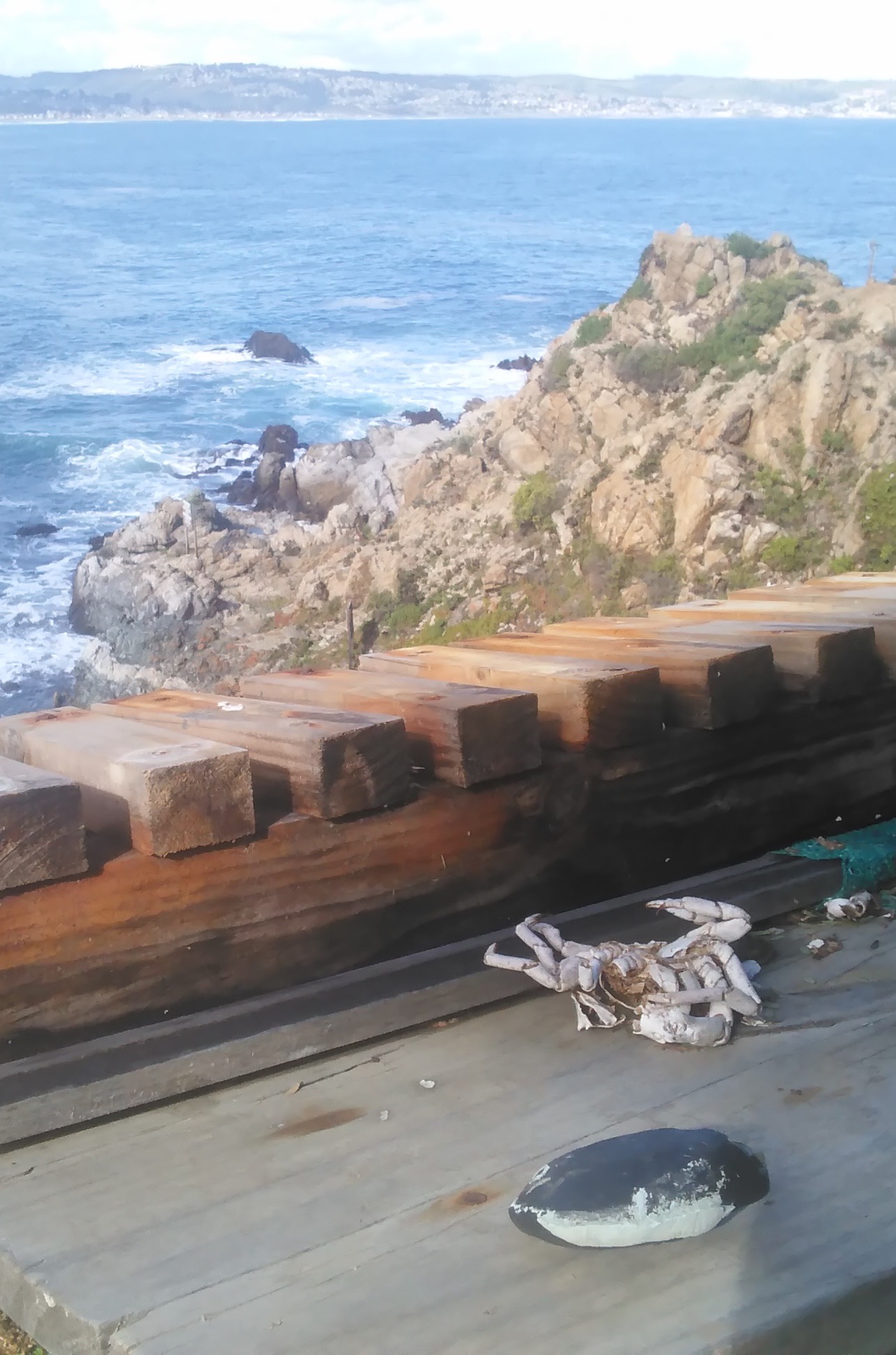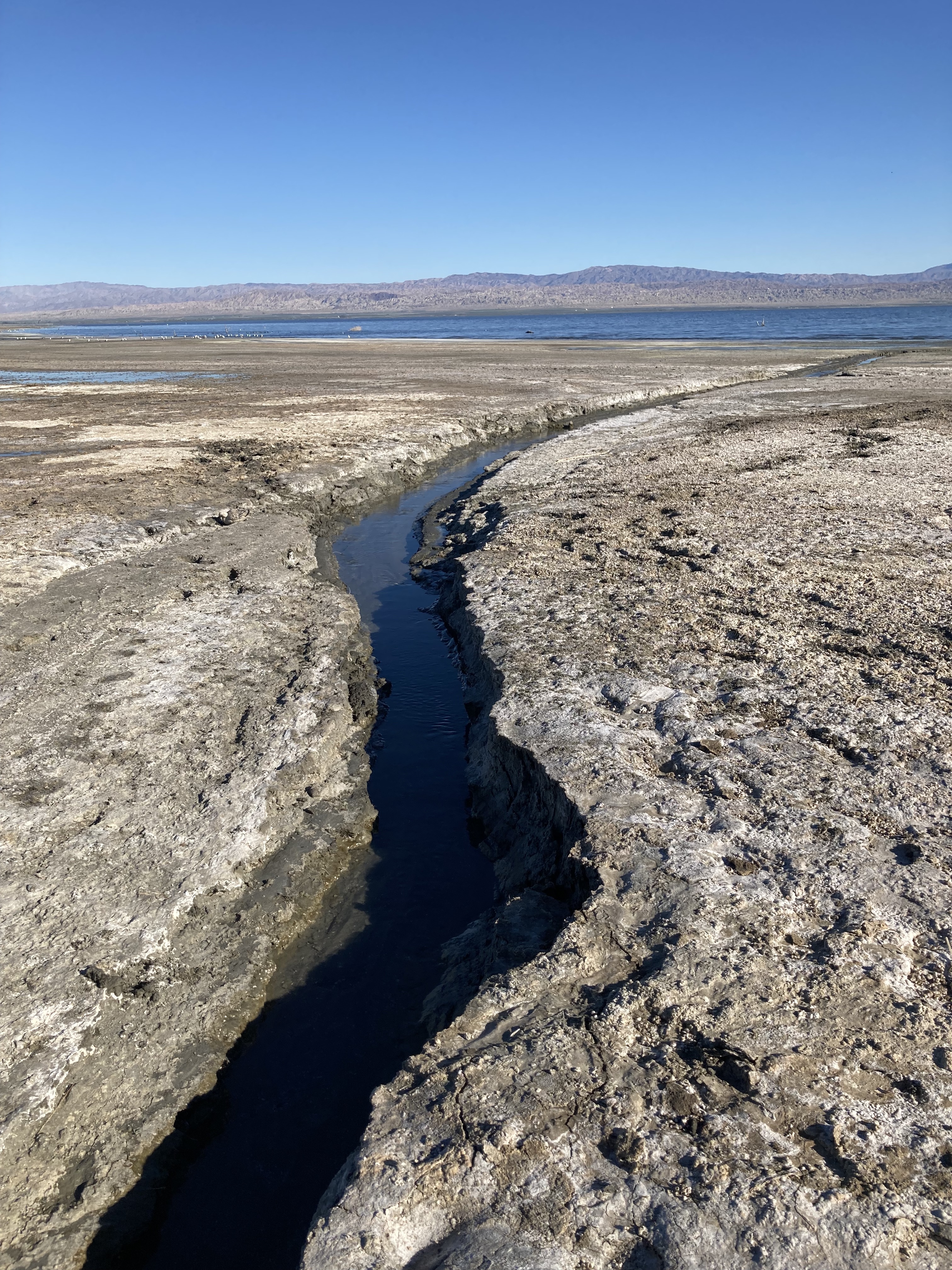Much of our work focuses the fluid dynamics of physical oceanographic processes, including fronts and eddies and the ways that these dynamics affect ocean microbial ecology, carbon cycling, and nutrient distributions. Our work understanding the link between ecological dynamics and physical environmental processes involves developing methodologies for modeling ecological processes in the context of environmental variability and stochastic frameworks in ecology. We use a range of methods from theory to numerical ocean models to observational work. Our current research has four major themes (1) biophysical interactions, (2) submesoscale dynamics, (3) ecological networks, and (4) community-engaged science for climate justice.

Bio-physical interactions
The fluid environment shapes ocean ecosystems through cascading influences on ecological function, biogeochemical cycles, fisheries, and climate. Oceanic fronts and eddies play an outsized role in global biogeochemical cycling as hotspots of primary production and subduction of carbon and oxygen from the surface to the ocean interior. The influence of eddy and frontal dynamics on ecology and biogeochemical cycles depends on both the pathways of transport and on the ways that microbial communities respond to physical processes. Vertical transport is particularly important because of the large gradients in light and nutrients in the upper ocean. I use process study models and field observations of biogeochemical tracers to improve understanding of submesoscale vertical tracer fluxes and the implications for global biogeochemistry. I study bio-physical processes using idealized modeling, theory, and observations.
Related publications:
Freilich, M.A., Poirier, C., Dever, M., Alou, E., Allen, J., Cabornero, A., Choi, C., Sudek, L., Ruiz, S., Pascual, A., Farrar, J.T., D'Asaro, E., Worden, A.Z., Mahadevan, A. (2024). Microbially enriched intrusions from the deep chlorophyll maximum transport carbon to the mesopelagic ocean. PNAS. (Science editor's highlight, news coverage)
Freilich, M.A., Flierl, G., Mahadevan, M. (2022). Diversity of growth rates maximizes phytoplankton productivity in an eddying ocean, Geophysical Research Letters, e2021GL096180. (pre-print).
Freilich, M., Mignot, A., Flierl, G., and Ferrari, R. (2021). An investigation of grazing behaviors that result in winter phytoplankton biomass accumulation. Biogeosciences, 18, 5595–5607.

Submesoscale dynamics
Submesoscale dynamics (1-10 km scales and non-linear dynamics) are uniquely important for ecological processes due to nature of the vertical motion at the submesoscale. My resarch focuses on understanding the mechanisms behind the couplings between submesoscale turbulence and climate dynamics, and the implications for both transfer of energy across scales and for biogeochemical tracer transports. I have been particularly interested in vertical transport, the interactions between waves and eddies, air-sea interactions, theoretical analysis of non-linear geophysical fluid dynamics, and the use of remote sensing to disentangle physical dynamics.
Related publications:
Freilich, M.A., Lenain, L., Gille, S., (2023) Characterizing the role of non-linear interactions in the transition to submesoscale dynamics at a dense filament. Geophysical Research Letters.
Freilich, M. and Mahadevan, A. (2021). Coherent pathways for subduction from the surface mixed layer at ocean fronts. Journal of Geophysical Research: Oceans, 126 (5), e2020JC017042. (pre-print).
Freilich, M. and Mahadevan, A. (2019). Decomposition of vertical velocity for nutrient transport in the upper ocean. Journal of Physical Oceanography, 49 (6), 1561-1575.

Ecological networks
Populations are shaped by biological processes, species interactions, and environmental forcing. However, observations of these rates and interactions are sparse. I tackle this problem by developing mathematical approaches that center variability as a key to understanding and predicting ecosystem dynamics, including biostochastic modeling and statistical approaches infer the rates and forms of species interactions from observed species distributions. I am particularly interested in stochastic approaches and using data science tools to interpret environmental data sets.
Related publications:
Freilich, M., Rebolledo, R., Corcoran, D., and Marquet, P. (2020). Reconstructing ecological networks with noisy data.. Proc. R. Soc. A.(476), 20190739. (pre-print).
Freilich, M., Weiters, E., Broitman, B., Navarrete, S. (2018) Species co-occurrence networks: can they reveal trophic and non-trophic interactions in ecological communities?. Ecology, 99 (3), 690-699. (pre-print).

Community-engaged science
Scientists have the fundamental task of being accountable to doing work that improves the lives of people and contributing to overcoming marginalization and injustice. I work with community organizations using a range of methods from science communication to collaborative research. Part of this work involves analysis and action to ensure our science institutions are diverse, equitable, and inclusive.
Related projects:
Climate Changed: Models in the Built World, a collaborative publication on the use of models across climate science, design disciplines, engineering, environmental justice, and humanities. Because the climate is already changing, we increasingly rely on models to know our environment (yet are confronted with the issue of non-stationarity, so statistical models may fail). Models do not just report on likely conditions; they shape our view of the past, our actions in the present, and the future trajectory.
Salton Sea Environmental Timeseries is organized by a team of non-local scientists and local community members (with scientific and non- scientific careers) working to develop a water monitoring program to collect information on the Salton Sea that can be used for further advocacy efforts.